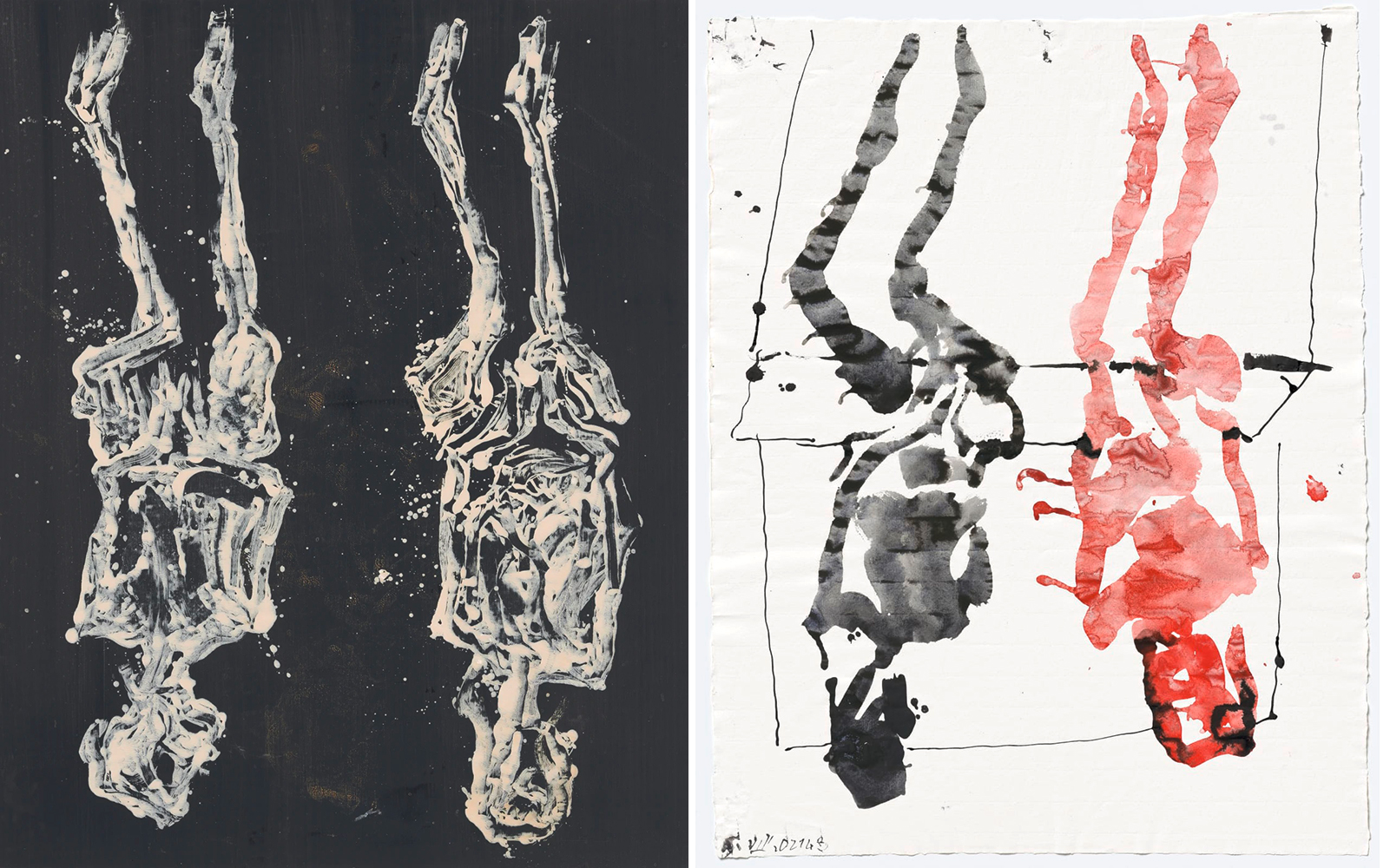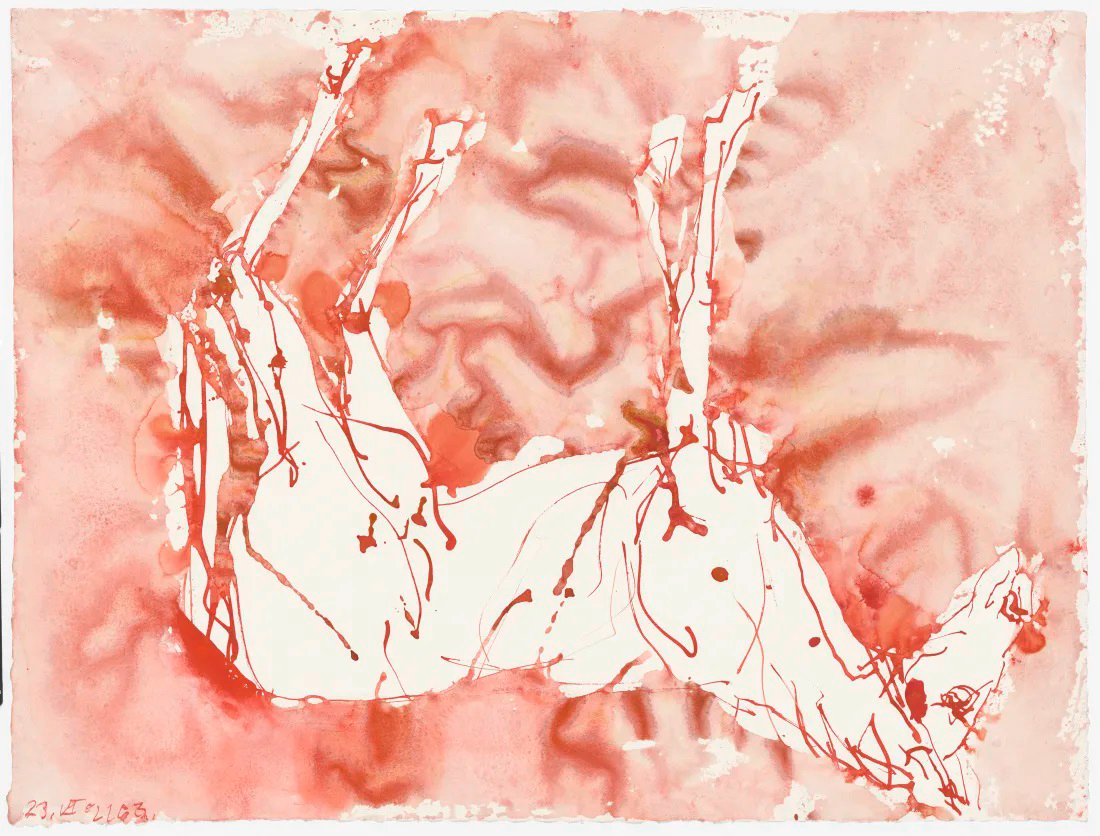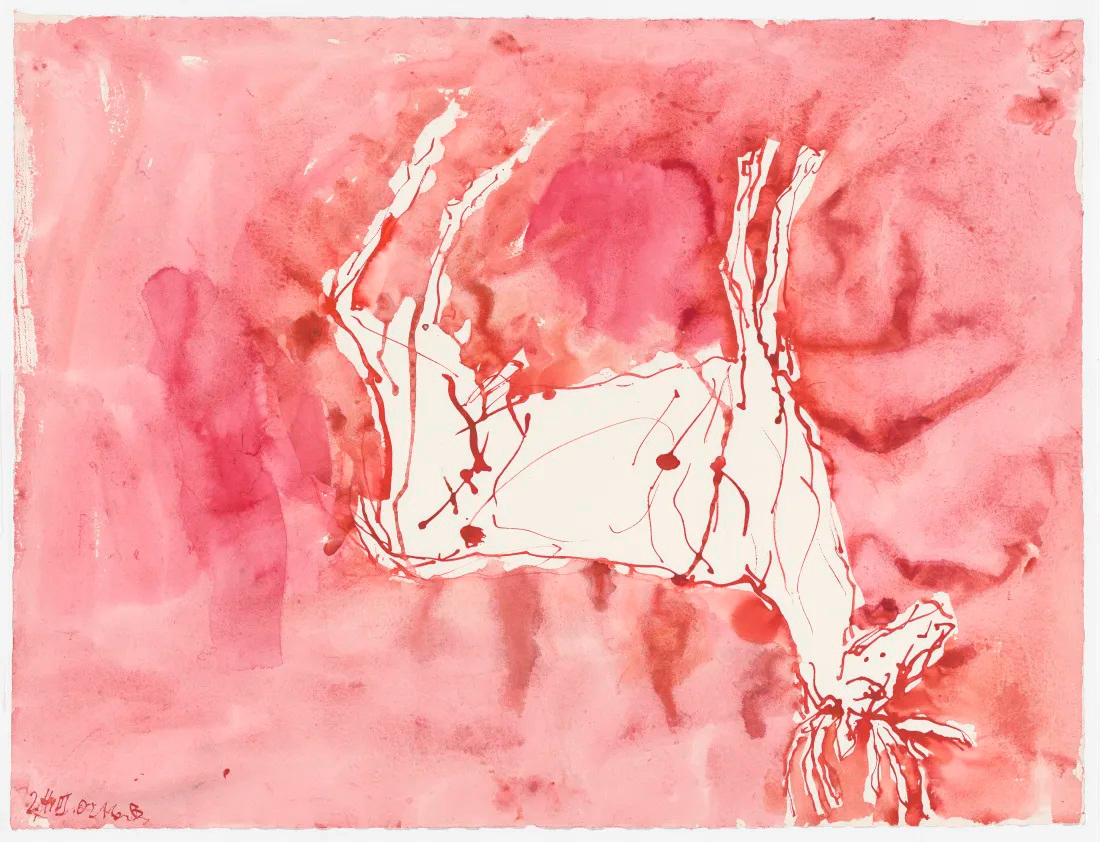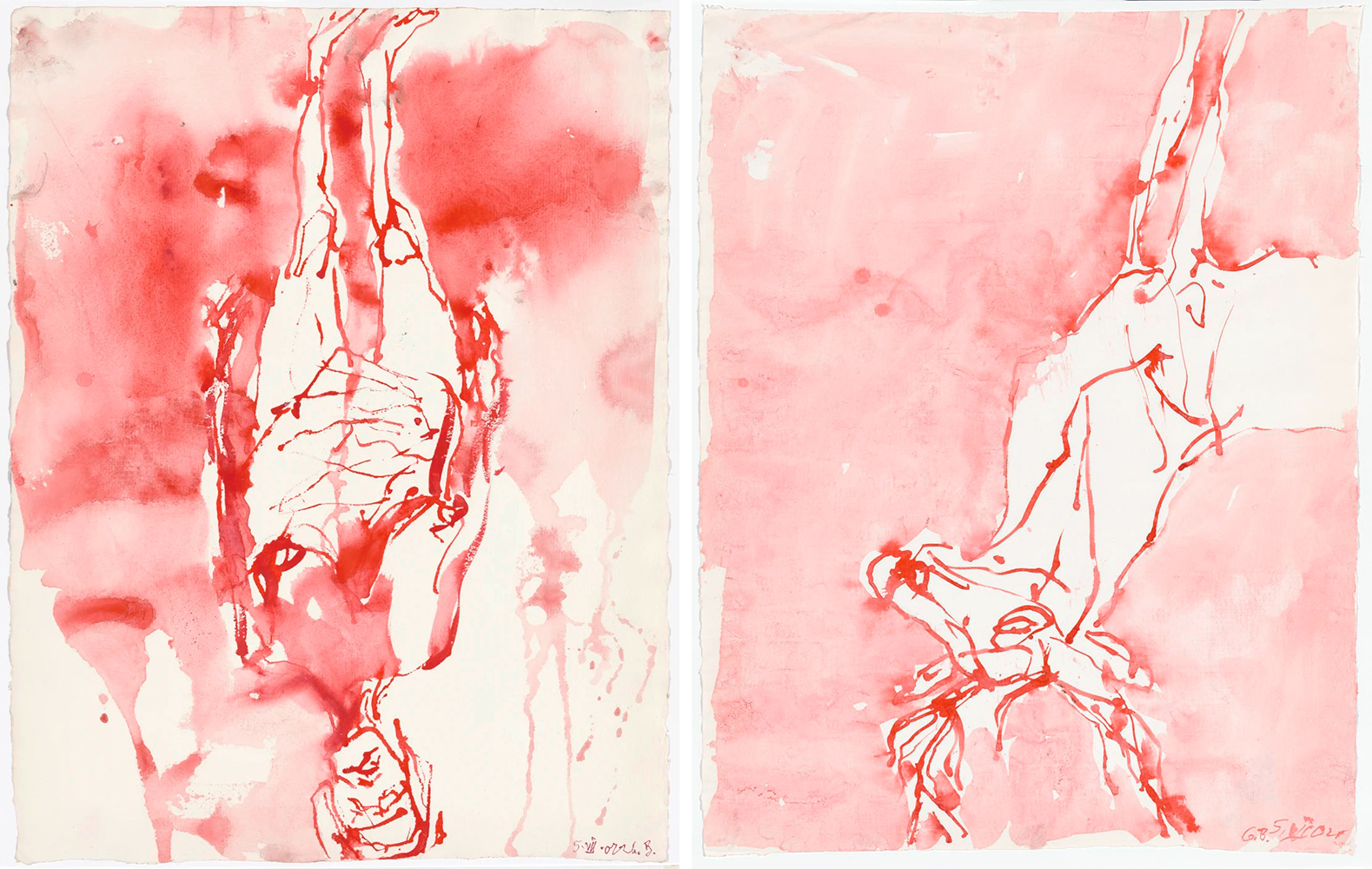PRESENTATION: Georg Baselitz-Hotel Garni
 Georg Baselitz has had a profound influence on international art since 1960 and is indisputably one of the most important artists of our time. He shaped a new identity for German art in the second half of the 20th century; in reaction to the trauma and tragedy of the Second World War, he developed an artistic vocabulary which draws on the work of his forebears, whilst remaining unique and wholly individualistic. Since then, Baselitz has constantly renewed his practice through formal developments, drawing upon art history and his own extensive oeuvre, never allowing himself to become restricted by a single, identifiable style.
Georg Baselitz has had a profound influence on international art since 1960 and is indisputably one of the most important artists of our time. He shaped a new identity for German art in the second half of the 20th century; in reaction to the trauma and tragedy of the Second World War, he developed an artistic vocabulary which draws on the work of his forebears, whilst remaining unique and wholly individualistic. Since then, Baselitz has constantly renewed his practice through formal developments, drawing upon art history and his own extensive oeuvre, never allowing himself to become restricted by a single, identifiable style.
By Dimitris Lempesis
Photo: Gallerie Thadaeus Ropac Archive
Georg Baselitz created twelve paintings and twelve drawings specifically for the opening of the new space of Thaddaeus Ropac Gallery in Seoul. The artist’s historic connection with the city dates back to his first institutional solo exhibition in Korea at the National Museum of Modern and Contemporary Art in 2007. One of the most important artists of our time, Baselitz shaped a new identity for German art in the second half of the 20th century and has had a profound influence on international art since 1960. In his new series of large-scale canvases, Baselitz devotes himself to the motif of his wife Elke, whose image has occupied a prominent position in the development of his practice for over 50 years. In order to empty form of its content, the artist has been inverting his compositions since 1969, disrupting any harmony or beauty that was likely to seep into the portrayal of a subject so familiar to him. In his choice of the exhibition title “Hotel garni”, Baselitz references the scene of Pablo Picasso’s “Les Demoiselles d’Avignon” (1907) through a characteristically humorous chain of associations. He is playful with words while summoning the confrontational composition and unconventional femininity of one of his historic forebear’s greatest artistic achievements. As the artist says “…this painting [Les Demoiselles d’Avignon] has always interested me very much in various ways. I have made many works in the past, in my recent past, in relation to this. Not formally, not aesthetically, but just related to the story and the title”. The works on paper included in the exhibition are drawn in black or sanguine ink, which lends the images a visceral quality. The decisive graphic lines and contours show direct traces of the artist’s hand and represent a parallel strand to his paintings, demonstrating the development of his personal iconography across media.
Georg Baselitz has been painting his compositions upside down since 1969. For Baselitz, this novel format was a way of emptying form of its content, navigating between abstraction and figuration, and revolutionising a medium that was then regarded as irredeemably conventional. His directly tactile method of painting with his fingers in the 1970s encouraged a freer use of color and material that would come to the fore in his expressionist color fields of the 1980s. This was a seminal decade for the artist, opening with his selection to represent Germany at the 1980 Venice Biennale alongside Anselm Kiefer, which marked his first foray into sculpture. The urge towards constant innovation has been present throughout his career, as in the Remix Paintings he has been creating since 2006 that re-examine the iconography of past works. By revisiting his own motifs and integrating subtle references to art history, Baselitz offers a reflection on the significance of painting itself. Asked about this self-referentiality, he stated: “I kept sinking into myself, and everything I do is being pulled out of myself”. In recent works that feature the figures of the artist and his wife Elke, Baselitz engages in the struggle of representation, the inescapability of subjectivity, and the representation of the self through a significant other. He has also introduced a new technique in recent works created using a transfer method, in which the lightness, boldness and vivid colouration is conceived as an homage to Roy Lichtenstein.
Photo Left: Georg Baselitz, Einzelzimmer, Einzelbett, 2021, Oil on canvas, 250 x 200 cm, © Georg Baselitz, Courtesy the artist and Gallerie Thaddaeus Ropac. Right: Georg Baselitz, Go in and out, 2021, Oil on canvas, 250 x 200 cm, © Georg Baselitz, Courtesy the artist and Gallerie Thaddaeus Ropac
Info: Gallerie Thaddaeus Ropac, 2F, 122-1 Dokseodang-ro, Hannam-dong, Yongsan-gu, Seoul, South Korea, Duration: 7/10-27/11/2021, Days & Hours: Tue-Sat 10:00-18:00, https://ropac.net




